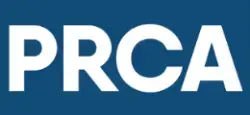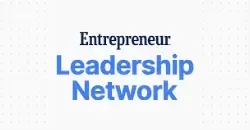The Fletcher Marketing team hosted a workshop for Blount County Chamber of Commerce members to teach how media relations can help drive sales in your business. We enjoyed the opportunity to work with local business leaders on incorporating public relations strategies to increase brand awareness and, ultimately, boost sales. We covered everything from why media relations should be part of your strategy, to what makes a good news story and how to measure your success.
Forrester research found trusted, highly effective earned media sees conversion rates of 5% or higher compared to traditional paid media, which has conversion rates of 1% or less.
Media relations helps to increase awareness of your brand by boosting your SEO (search engine optimization) and reaching more potential customers. By contributing editorial byline articles and becoming an expert analyst in your field, media relations can also help increase credibility as potential customers are researching and evaluating your company.
Failing to include earned media relations in your marketing strategy hinders opportunities to improve your social clout, gain third-party credibility, boost SEO rankings and reach, increase website traffic and ultimately, receive higher quality leads.
Most importantly, know what is newsworthy. Journalists receive hundreds of pitches each day, and many aren’t relevant. Bombarding journalists with pitches may do more harm than good. Too many irrelevant pitches could lead them to block your email and develop a negative perception of your brand.
How to determine if the story is newsworthy:
- Is there something new?
- Does it include information that would benefit the audience?
- Is it timely? An event happening now or soon?
- Is there a specific need or call to action?
- Can you support the story with facts, statistics and data?
- Can the story tie into a current event or topical conversation?
- Is there a unique or emotional story to tell?
- Pitches and news releases cannot be overly promotional. If it’s merely a sales pitch in disguise, you should rethink it.
Once the determination has been made that the topic is newsworthy, develop a strategy for how to pitch the media. Is this a news release you want to send to a large list of media recipients? Or a heart-warming or unique story you want to pitch to a single journalist? Answering these questions determines how to approach pitching the story.
Most journalists are overworked and underpaid. Help make their jobs easier. Gather all supporting: infographics, logos, photos, video, interview opportunities and any additional information to make the story appealing. Usually, you get one chance to sell your story – don’t waste it by leaving out important details or not providing good assets.
Conduct Research:
Develop a good understanding of the journalists and media outlets you are pitching.
- Does the journalist cover your industry or the general theme of the story?
- Is this story relevant for the editorial line of the specific news outlet?
- Would your story fit with the type of stories the journalist produces?
For example, feature stories, in-depth analysis or traditional news reporting? - Is your pitch personalized for the specific journalist?
Timing is everything.
According to proprietary research conducted by Fletcher Marketing PR, journalists listed the following preferences
- Most journalists prefer email pitches
- Beginning of the week and early in the day are the best times to get the most views
- Avoid times during big breaking news or major event coverage
- Give journalists enough time – one month in advance for a festival or concert is sufficient
- Send a media advisory reminder a few days before events/festivals
- Follow up once. If the media outlet likes the idea they will get back to you.
Follow through cannot be understated.
If a journalist bites on the story pitch, be ready to respond quickly, as their deadlines are quick, and opportunities will be list if you can’t act fast. Be ready to do an interview outside of regular business hours. Don’t reschedule unless you absolutely must and understand that rescheduling may result in loss of the interview altogether.
Repurpose media coverage.
There are many ways to repurpose coverage you’ve earned including:
- Creating a news section on your website and posting coverage.
- Share across social channels
- Use in email campaigns and newsletters
- Use for presentations, speaking engagements and sales proposals
- Include in award submissions
- Send relevant media coverage to potential clients to boost credibility and improve sales conversions
Know how to measure the impact of earned media.
Measure media coverage return-on-investment by monitoring impressions and reach. Impressions and reach help measure how many people potentially viewed a news story. These are important because they provide directional metrics: If impressions or reach are zero, then remaining o PR metrics don’t matter. Earned media bridges the gap between the addressable audience and the rest of your PR and marketing funnel.
Backlinks are links from another site to your site—also known as inbound links. Search engines like Google use backlinks as a ranking signal since when one website links to another, Google and other search engines recognize the content as credible and noteworthy. Successful media relations campaigns create increased backlinks. Website metrics will typically improve during a media relations campaign and can be correlated based on heightened traffic after a news story appears. organic SEO benefits, website referral traffic new users driven to the site.
Though you can use Google Analytics and social media insights offered on each individual platform to measure some of these metrics, sophisticated marketing and public relations firms invest in additional software and metrics and analytics platforms that an offer deeper insights. There are tools available to measure sentiment and tone of coverage share of voice to compare your reach to that of competitors and in-depth backlink tracking. Advanced analytics are available that assist with tracking direct impact on sales conversions.
If you’re interested in adding media relations to your business strategy, we’d be happy to schedule a complimentary consultation. Contact Kelly Fletcher at Fletcher Marketing PR, kfletcher@fletchermarketingpr.com.

